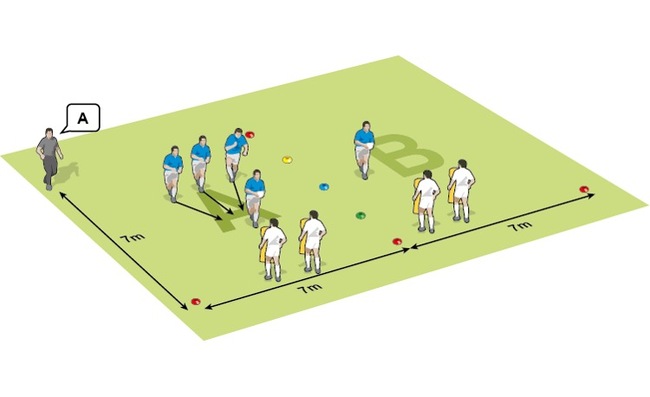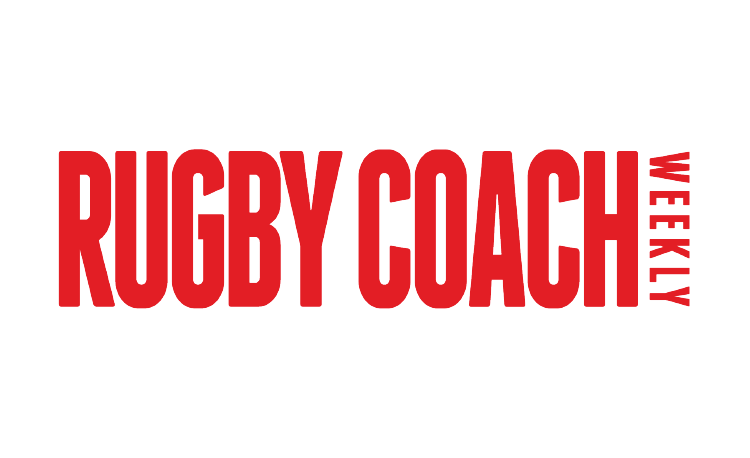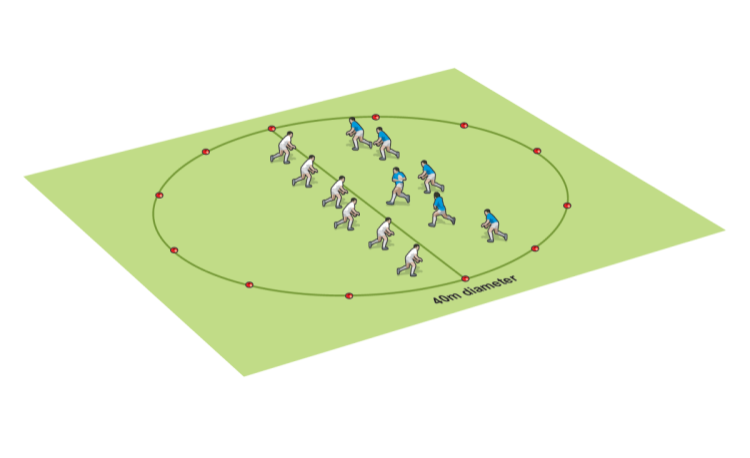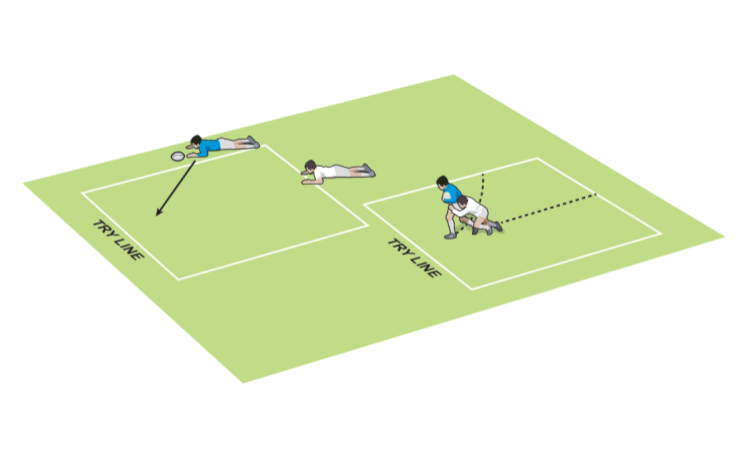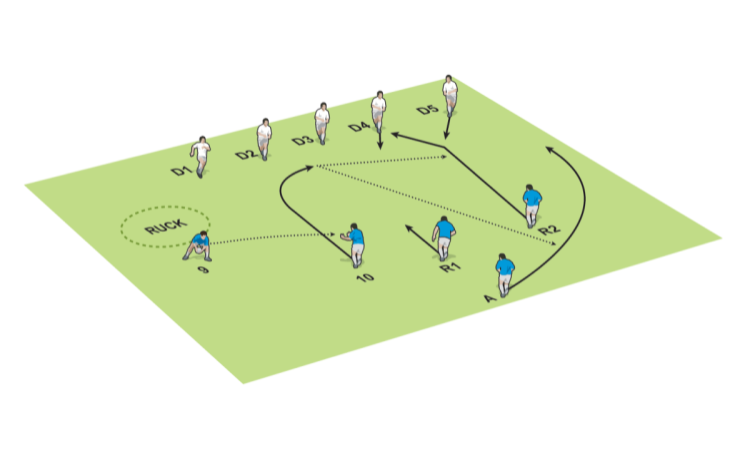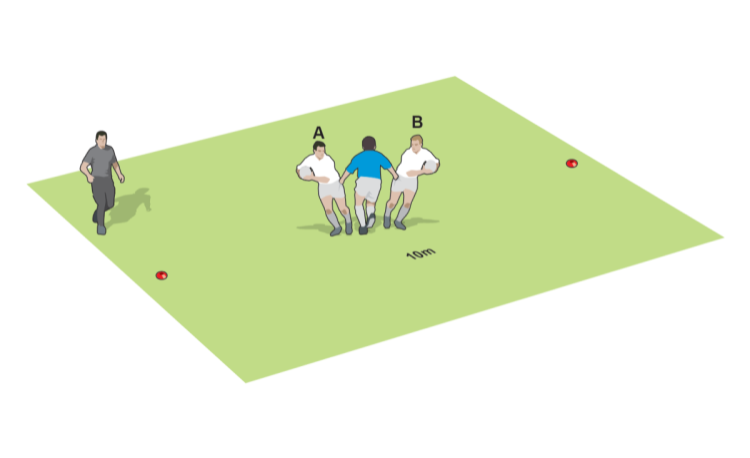You are viewing
1 of your 2 free articles
VIDEO: Ruck decisions 2 v 2
Use this activity to work on rucking with lots of action and players not knowing who they might be up against in the tackle contest.
- Put a ball carrier and tackler about 3-5m apart. Behind each player put a line of at least five different colour cones, no more than 1-2m apart. Have a player on their knees on each cone.
- Indicate which way the ball carrier will go (either left or right). Call out a colour and the ball carrier runs to that side and is tackled. At the same time, the players on each cone race out.
- There’s a one v one ruck. Call stop when the ball is won by either side or there’s an infringement.
- In the meantime, all the players shuffle forward to fill the gaps. The players involved in the action run to join the back of the groups they didn’t start in.
COACHING TIP
Work to get over the ball.
WHAT TO CALL OUT
- Get lower than your man.
- Stay on your feet and keep driving forward.
DEVELOP THE PRACTICE
Play a normal game of touch rugby, 6 v 6 in a 30m box. Give one side a number from 20 to 25 and the other side 30 to 35.
When there’s a two-handed touch, the ball carrier has to go to ground. Call out a number for each team. Those two numbered players have to compete for the ruck ball. If the ball carrier on the ground’s number is called, he has to let go of the ball, get to his feet and protect the ball. Develop by calling out more than one number for each team.
Newsletter Sign Up
Coaches Testimonials

Gerald Kearney, Downtown Las Vegas Soccer Club

Paul Butler, Florida, USA

Rick Shields, Springboro, USA

Tony Green, Pierrefonds Titans, Quebec, Canada
Subscribe Today
Be a more effective, more successful rugby coach
In a recent survey 89% of subscribers said Rugby Coach Weekly makes them more confident, 91% said Rugby Coach Weekly makes them a more effective coach and 93% said Rugby Coach Weekly makes them more inspired.
Get Weekly Inspiration
All the latest techniques and approaches
Rugby Coach Weekly offers proven and easy to use rugby drills, coaching sessions, practice plans, small-sided games, warm-ups, training tips and advice.
We've been at the cutting edge of rugby coaching since we launched in 2005, creating resources for the grassroots youth coach, following best practice from around the world and insights from the professional game.
